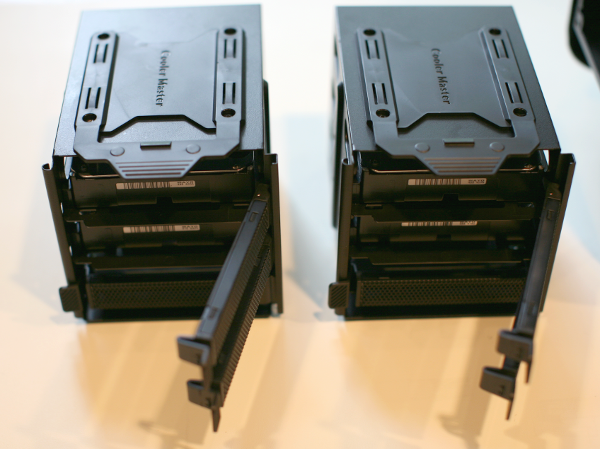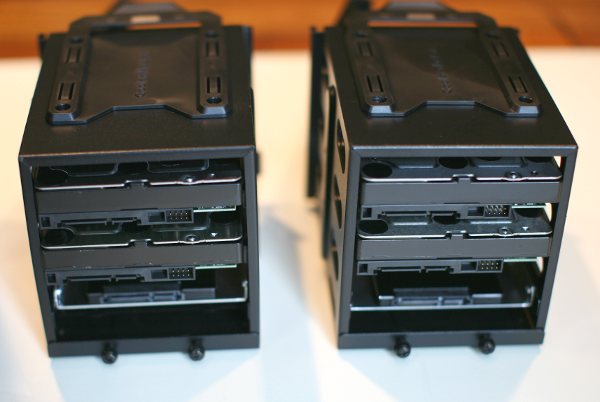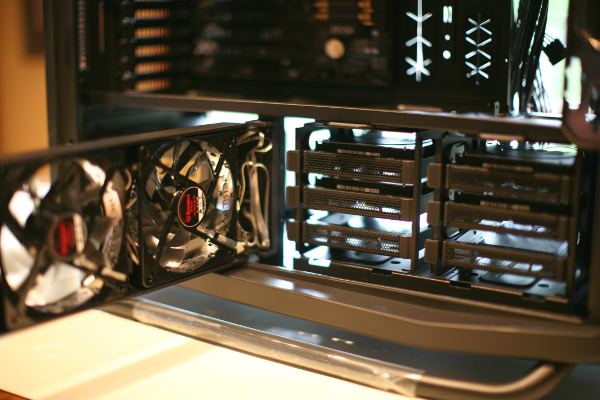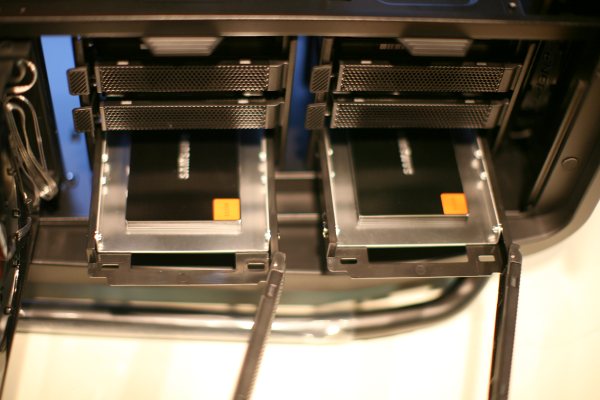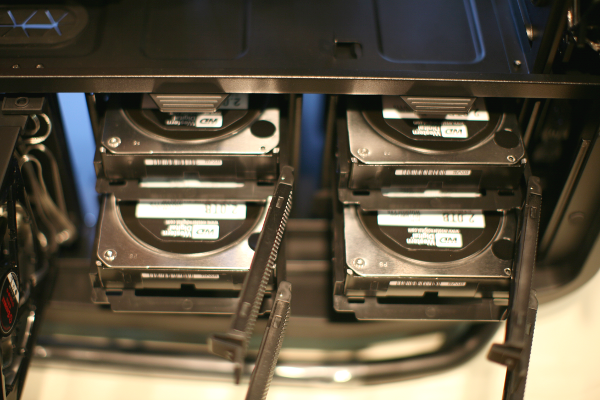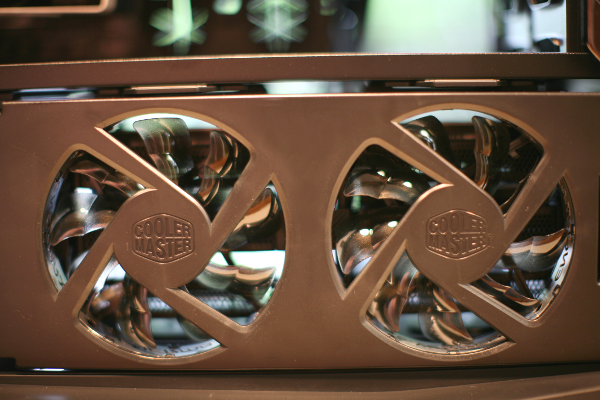Nothing fancy but meets the reqs;
Case: Norco RPC-3216A 3U
PSU: Seasonic X-560
MB: ASUS P8B-WS
CPU: Intel Xeon E3-1260L
Mem: 16GB ECC
JBOD: Areca ARC-1320ixl-16
UPS: APC Smart-UPS 750 with SNMP management-card
2x Western Digital 160 GB Black Scorpio System RAID MIRROR
8x Seagate Barracuda 3TB ST3000DM001 Storage RAID Z2 => 18TB (24TB)
1x OCZ Vertex4 128GB SSD (dedicated to a Virtualbox machine)
1x Samsung 320GB E-SATA (dedicated to a Virtualbox machine)
Running Solaris 11 11/11 and Virtualbox
Quite a bit of work to setup Solaris stable with this x86-hardware. Have for example noticed that scrubbing of the storage-pool hangs if the virtual-box machines are quite active (even when they are using own physical disks). The only remedy for this is to reboot the machine at the time and avoid starting the VM's. Could be something else that causes this situation, haven't investigated it that much (the scrub cron runs each 3 month so not that noticable).
Since there's no UPS-management software from APC for Solaris when running headless, so I've got a VB-script running on one of the VM's that logs in and checks status and if battery is low sends a Solaris shutdown. This script also does some other fancy things like checking the internet connections (have two), update a webpage with statistics and so on.
Didn't bother with the 4k, am quite ok with the performance from 512 emulated on the 3TB Seagate Barracuda's.

Case: Norco RPC-3216A 3U
PSU: Seasonic X-560
MB: ASUS P8B-WS
CPU: Intel Xeon E3-1260L
Mem: 16GB ECC
JBOD: Areca ARC-1320ixl-16
UPS: APC Smart-UPS 750 with SNMP management-card
2x Western Digital 160 GB Black Scorpio System RAID MIRROR
8x Seagate Barracuda 3TB ST3000DM001 Storage RAID Z2 => 18TB (24TB)
1x OCZ Vertex4 128GB SSD (dedicated to a Virtualbox machine)
1x Samsung 320GB E-SATA (dedicated to a Virtualbox machine)
Running Solaris 11 11/11 and Virtualbox
Quite a bit of work to setup Solaris stable with this x86-hardware. Have for example noticed that scrubbing of the storage-pool hangs if the virtual-box machines are quite active (even when they are using own physical disks). The only remedy for this is to reboot the machine at the time and avoid starting the VM's. Could be something else that causes this situation, haven't investigated it that much (the scrub cron runs each 3 month so not that noticable).
Since there's no UPS-management software from APC for Solaris when running headless, so I've got a VB-script running on one of the VM's that logs in and checks status and if battery is low sends a Solaris shutdown. This script also does some other fancy things like checking the internet connections (have two), update a webpage with statistics and so on.
Didn't bother with the 4k, am quite ok with the performance from 512 emulated on the 3TB Seagate Barracuda's.

![[H]ard|Forum](/styles/hardforum/xenforo/logo_dark.png)






